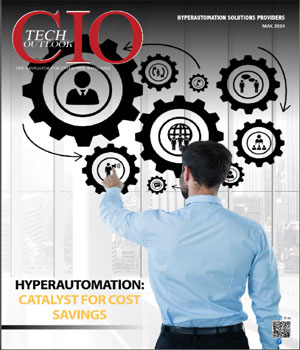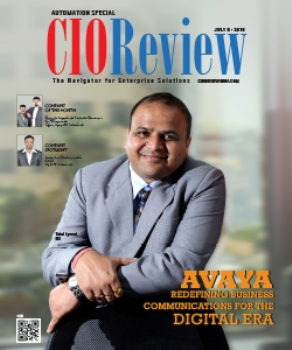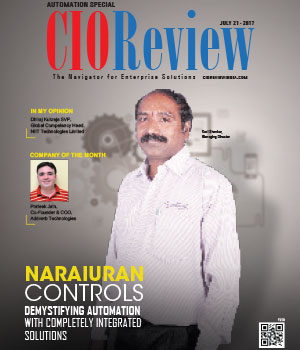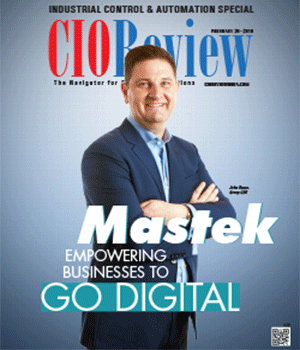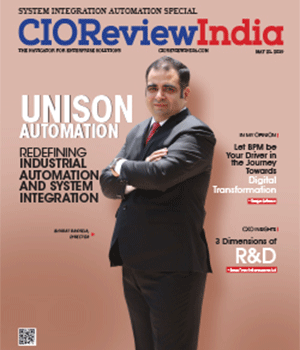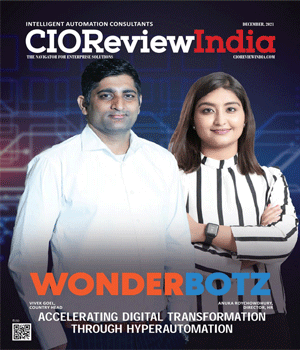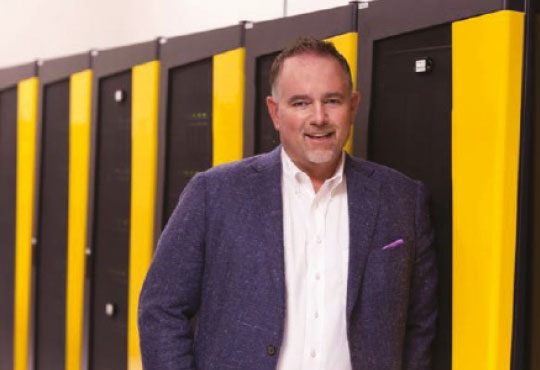
Enterprise Automation - Need, Drivers and Ways to Achieve and Measure
Dhiraj Kukreja, SVP, Global Competency Head, NIIT Technologies Limited | Wednesday, 23 August 2017, 10:30 IST
 NIIT Technologies is a leading global IT solutions organization servicing customers across the Americas, Europe, Asia and Australia. Focused on Digital Services, the Company is helping businesses design agile, scalable and digital operating models.
NIIT Technologies is a leading global IT solutions organization servicing customers across the Americas, Europe, Asia and Australia. Focused on Digital Services, the Company is helping businesses design agile, scalable and digital operating models.
"Evolution of cutting-edge technologies like Artificial Intelligence, Robotics and Analytics, are enabling organizations to look for “SMART AUTOMATION"
Automation is not a new phenomenon. Humans throughout the ages were fascinated by the idea of using machines to augment productivity. Not just in manufacturing, we have been using automation techniques in some form or the other in providing IT solutions to customers. If automation always existed, what really has changed and why automation has come of front in most of IT deals in last 4-5 years and why organizations are taking automation as a strategic theme for their operations.
Drivers for automation
At the core of need of hyper automation is really the digital transformation. With businesses in midst of driving their digital strategy, it is but natural to call for more speed, agility, and self-enablement. Be it move from monolithic applications to micro services based architecture or on-demand analytics in decision making or cloud migration or social presence – all of this can happen only when organizations IT processes are agile and supported by right tools.
While digital transformations are pushing organizations to bring more automation, another dimension is how to automate standard and traditional processes in IT and business operations. This is areas where techniques like SPA (Smart process automation), Robotics (RPA) and Artificial Intelligence driven solutions are upping the ante. By applying machine learning algorithms or NLI and other cognitive techniques, idea is to reduce human dependencies on decision making and to automate the process in order to achieve maximum possible efficiencies in BAU operations.
Automation, not just for cost efficiencies any more
Be it for digital transformations or to bring efficiencies in BAU operations, automation has a key role to play. Now, as soon as we talk about Automation, all sorts of tools / platforms come to our mind. While they have important role the play, often organizations neglect the importance of process, governance and people and culture aspects of the automation. In absence of right automation culture and processes, tools will take only this far.
With automation happening across IT development projects, day to day IT operations and back office/ mid office business processes, there is greater need in organizations to move from siloed to systematic automation, for handling scale, user experience and dramatic cost reduction. This basically means, cost reduction isn’t really the driver for automation anymore. How does automation help organizations achieve faster GTM (Go to market), business insights, predictive and model driven decisions and self-service take centre stage in emerging word of automation.
Supported by Artificial Intelligence, RPA and cognitive technologies
Evolution of cutting-edge technologies like Artificial Intelligence, Robotics and Analytics, are enabling organizations to look for “SMART AUTOMATION”. There has never been so many technologies available at CIO’s anvil to support him into automation story. Challenge here for an organization is to pick up right set of technologies, be it open source or commercials which can really help them achieve full automation benefits. With the huge rise in quantum of enterprise as well as social data, techniques like Machine learning, deep leaning and neural networks become more effective. More the quality and volume of underlying data, more predictive can be machine leaning and cognitive technologies in driving mart automation.
Silos based approach to enterprise automation
Challenge which organizations typically face in their automation journey is identifying right set of technologies, where and how to focus on cognitive and more importantly looking beyond siloed and isolated view of automation. RPA or SPA are not the tools for business processes or shared services anymore. How we bring in automation tools and techniques which can benefit organizations across IT lifecycle, is really the key. With boundaries blurring between Development and Operations teams (though DevOps), there is greater need to look for automation adoption across complete ALM lifecycle and beyond. Some of the scenarios include robotics in Testing, AI in predicting defects and patterns/signals from production systems in development environments. Tron Smart Automation from NIIT Technologies combines these technologies and best-of-breed tools across IT infrastructure, Applications, and Business Operations to unleash the power of holistic automation. Some of examples in enterprise level automation include:
1. Automation of complete application lifecycle from requirements to production and passing through quality gates in an automated and measurable way.
2. Automation of IT operations through centralized and fully automated service desk operations.
3. Automation of Business operations through manual to automated processes
Measuring Automation Maturity
Another fascinating aspect of automation is the measurement of it. Every project or IT department does their bit on automation but wouldn’t it be great to measure the maturity of an organization on automation front. NIIT Technologies has created an automation maturity framework (which is part of its Tron Smart Automation platform) which can really help organizations build a pragmatic roadmap to automation while leveraging their investments on tool sets. Maturity framework not just looks at usage of technology/ tools but also brings in aspects of people, process, and culture in an organization for enterprise automation.
CIO Viewpoint
By Steve Brunker, CIO, LSI Industries
By Joel Austin, CIO, Oncor Electric Delivery
How Is IoT Emerging as Next Technology Mega...
By Prashanta Ghoshal, Director - IT Solutions, Geometric Ltd.
CXO Insights
Addressing the Challenges in Logistics Automation
By Janifha Evangeline
Digitalization - the critical enabler for...
By Rajesh Ramachandran, Global Chief Digital Officer - Process Automation & ABB Ability, ABB
Enterprise-wide Approach Needed for...


